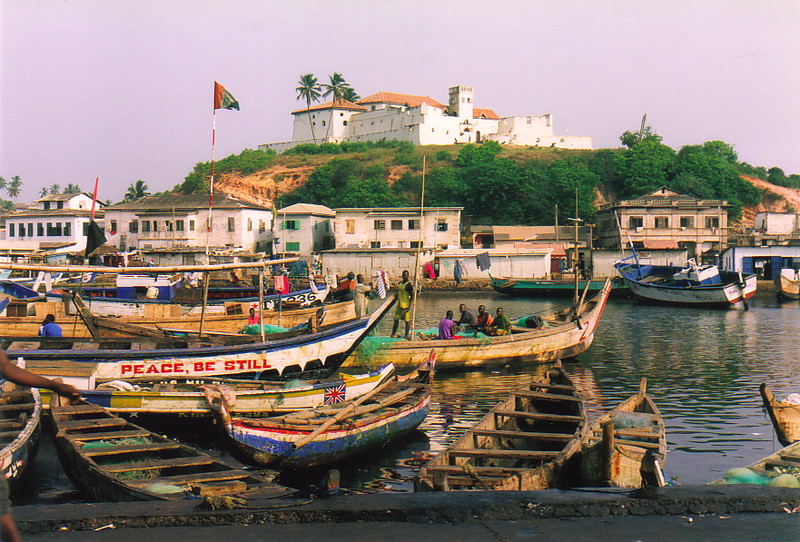
A short distance west of Cape Coast is yet another perfect example of Ghana's coastal fortifications; Elmina boasts not one but two World Heritage forts, and after the moving experience of visiting Cape Coast Castle I didn't waste any time in hopping in a shared taxi for a day trip to Elmina.
Elmina is a lovely little town, curved around the back of a large south-facing crescent bay that gradually rises into a series of small hills behind the town. At the western end of the bay the tides have formed a long, thin lagoon that initially runs parallel to the shoreline, forming the town's fishing harbour before emptying north into what is now a collection of salt-making plants called Benya Lagoon; meanwhile, the fishing harbour forms a rocky peninsula to the south that's a perfect spot for St George's Castle, the main attraction in Elmina.
As if this wasn't enough, on top of a hill on the northern side of the fishing harbour, bang in the middle of town, sits Fort St Jago, its white walls and red tiled roofs more reminiscent of a Mediterranean villa than a colonial castle. The composition of Elmina is perfect, with the two castles eyeing each other up across town while the fishing port bustles along underneath. It really is picture postcard stuff.
St George's Castle
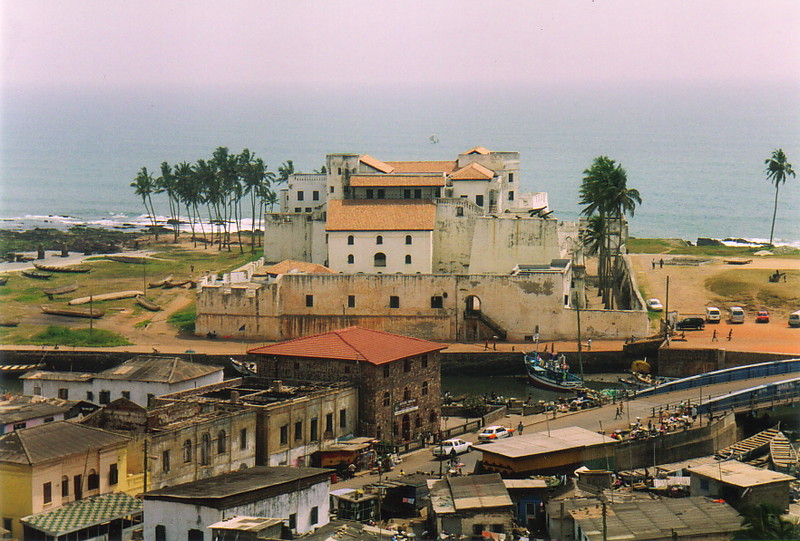
By far the bigger of the two fortifications, St George's Castle is also the older, and the one that's most geared up for tourism. As at Cape Coast the castle contains an informative museum, though interestingly the museum at St George's hardly mentions slavery at all, and doesn't go into great detail about the castle itself, instead concentrating on the local people and their way of life. If you only visited Elmina and didn't have time to explore Cape Coast too, you could be forgiven for thinking that St George's Castle was hardly involved in the slave trade at all. You would, however, be wrong; as with Cape Coast, the history of St George's makes pretty ugly reading.
The story starts back in 1482, when the Portuguese explorer Captain Diego d'Azambuja sought permission from King Kwamena Ansah of the local Edina tribe to build a fort in his territory. The resulting fort was called São Jorge da Mina (St George of the Mine), and the first buildings were started on , making what is now known as St George's Castle the oldest major stone structure to be erected by Europeans in the tropics; at the same time the Portuguese corrupted the name Edina to el mina, or 'the mine', referring to the many gold mines in the area (the local name for the town is still Edina, but its official name remains Elmina).
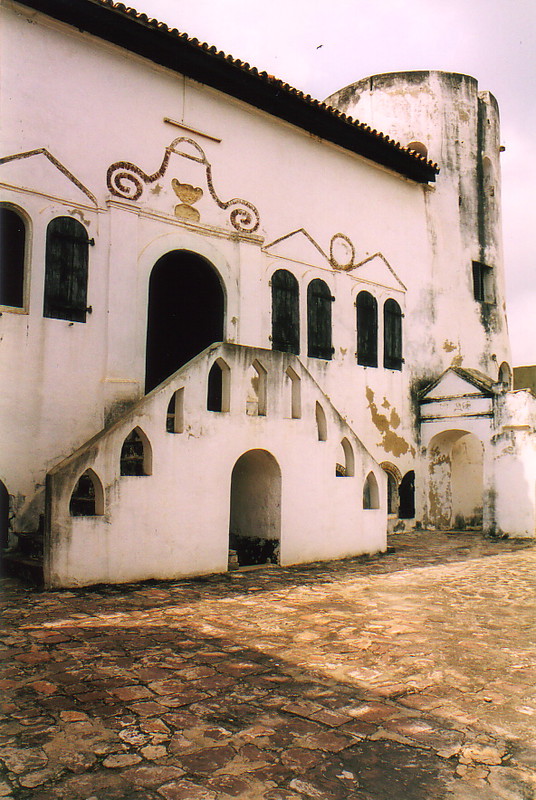
During the first year of construction São Jorge was visited by Christopher Columbus, ten years before his famous voyage to the Americas, and the castle was developed further with funding from the King of Portugal. Soon São Jorge housed between 40 and 60 paid officials of the Royal Court and was home to a Christian primary school; the castle also performed conversions, though not always with great success, as this quote from the museum display so eloquently puts it:
In the 1570s, Augustinian monks embarked on [the] evangelization of Elmina. The Augustinian evangelization suddenly ended when the monks were killed.
Undeterred, the Portuguese built a Franciscan church on what is now St Jago's Hill and dedicated it to St George, in the process building the first Christian church in Ghana and the first known Christian church in Africa outside Ethiopia. A walled town developed around the castle and by the early 1600s it was a self-governing city state, ruled by the Edina chief, his elders and the Portuguese governor of St George's Castle.
By 1700 the population had grown to over 12,000, but well before then things started to hot up on the Ghanaian coast. Initially the Portuguese were the only Europeans in the area, trading from their centres at Elmina and Axim and making a handsome profit, but by the start of the 1600s the Dutch had set up a commercial centre at Mori, 20km east of Elmina. This was a pretty low key affair, but the Dutch were obviously interested in expanding, because in 1596 they launched their first attack on Elmina; they tried to capture the castle from the sea, but to no avail.
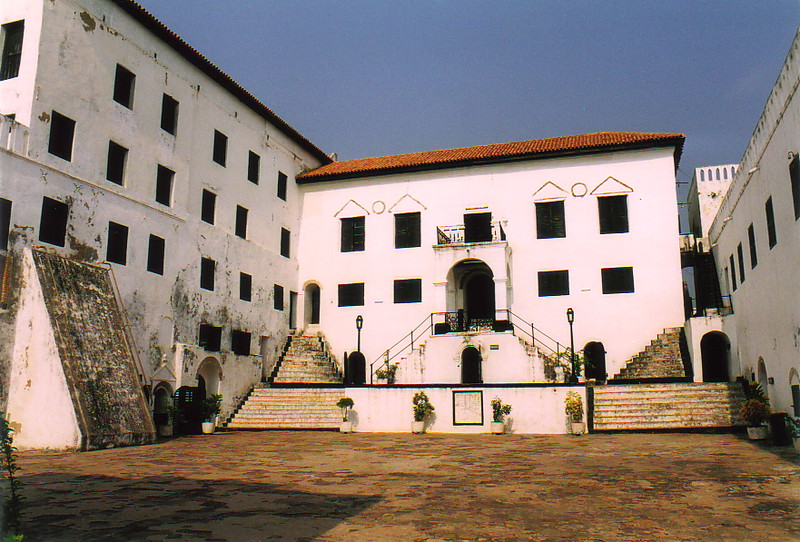
Shocked by the attack, the Portuguese decided their little chapel on St Jago's Hill was no longer safe, so the following year they built a replacement inside the walls of St George's Castle and left the old chapel to crumble. The Dutch attacked again in 1625, and again their naval assault was repelled, but the next time the Dutch tried to take Elmina they changed tack. Their third attack, starting on , consisted of a three-day bombardment of St George's Castle from the partial ruins of the chapel, which the Dutch had surreptitiously occupied with help from the locals. Faced with a siege from the perfect vantage point of St Jago's Hill, the Portuguese surrendered, leaving the Dutch to occupy the castle.
Unimpressed with the thought of worshipping in the Catholic church the Portuguese had built inside St George's Castle, the Dutch converted the church into a large trading hall and built their own Protestant church within the castle walls. They also repaired the damage they'd inflicted during the castle's capture, added more accommodation, paved the Great Court and improved the castle's defences; the Dutch were to remain in possession of Elmina and St George's Castle until 1872, when they sold it to the British to concentrate on their more lucrative interests in Indonesia.
But until that point Elmina itself was pretty lucrative, for like Cape Coast Castle along the coast, St George's Castle was a trading post for slaves for the New World. As with Cape Coast Castle the whitewashed walls look positively radiant in the hazy tropical sun, and St George's Castle is arguably even more picturesque than the behemoth of Cape Coast; it doesn't have the broad, open vista of the ocean that Cape Coast does, but it has tall, shady courtyards, it has lovely ramparts studded with turreted towers, it has a moat (though it's now dry), and the view over to picturesque Fort St Jago is enchanting. It's hard to imagine that, like Cape Coast, St George's Castle saw human degradation reach its lowest point.
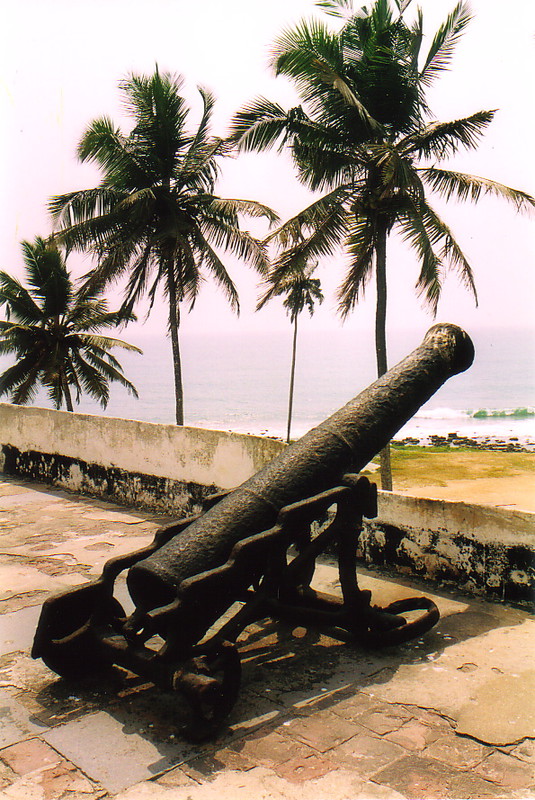
The slave dungeons in St George's Castle aren't remotely as large as those under Cape Coast – where Cape Coast could hold 1000 men and 500 women, St George's could only hold about 100 men and 100 women – but they're still distressing. Instead of being below floor level, as the Cape Coast dungeons are, the women's dungeon opens out into one of the castle's tall courtyards. Around the top of one end of this courtyard is a balcony that formed part of the officers' quarters, and according to the excellent guide I hired to take me round the castle, this is where the officers would stand and order the female slaves to be hauled out and paraded in the courtyard below. They'd study the slaves, and if they liked the look of any, they'd have them sent up the stairs, where they'd whisk them off and rape them, just in time for tea.
Slaves would be held in the dungeons for between one and three months, waiting for a slaver ship to turn up. When one arrived they'd be led down a dank corridor to the 'Door of No Return', a one-person-wide slot in the castle wall through which they would stumble, chained and manacled, blinking in the sunlight while looking for the last time on their homeland. Between a quarter and a half of them would die on board ship, a fate comparable with that reserved for any slaves who rebelled while in St George's; those unfortunates would be locked up in a small, airless prison just off the Great Court, where they would be left to die of thirst and starvation. The idea was to inflict maximum pain on slaves who revolted, to act as a deterrent; whether it worked or not I have no idea, but the skull and crossbones over the door is, at the very least, unsubtle.
Fort St Jago
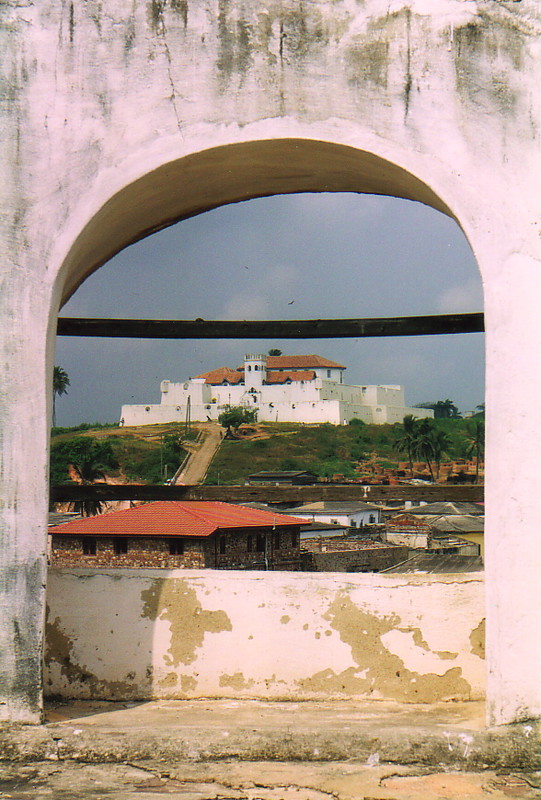
As you wander round St George's Castle, one of the more delightful aspects is the way its twin, Fort St Jago, keeps flitting into view through the windows and turrets. Perched on top of a small hill across the fishing harbour from St George's Castle, Fort St Jago is small and perfectly formed. In keeping with its pleasant aspect, it doesn't share the dark secrets of its bigger brother, for while the Portuguese and the Dutch herded slaves through St George's as quickly as they could, Fort St Jago simply sat there, looking down on the travesty below without comment.
When the Dutch captured St George's Castle by bombarding it from St Jago Hill, they realised that they would have to retain possession of the hill if they weren't to lose their new acquisition to the same trick. With this in mind, in 1666 they built Fort Coenraadsburg on the ruins of the Portuguese chapel, to act as a military barracks for protection of the town, which was booming with the burgeoning trade in locally mined gold and locally captured slaves.
The Dutch would occupy Elmina town and the two forts for 235 years, until the British, keen to control the whole Gold Coast so they could add it to their growing empire, attacked first in 1871, and then again in 1872. It's surprising that this hadn't happened before – on a clear day you can see Cape Coast Castle from Elmina, which must have been really irritating for the empire-mad Victorians – but it turned out that the Dutch weren't remotely interested in defending this distant outpost, especially as the trade in slaves and gold had long since dried up. So, to avoid a long, hard struggle to a foregone conclusion, the Dutch wisely sold Elmina to the British for a small sum and sailed off to concentrate on their more profitable colonies in Indonesia.
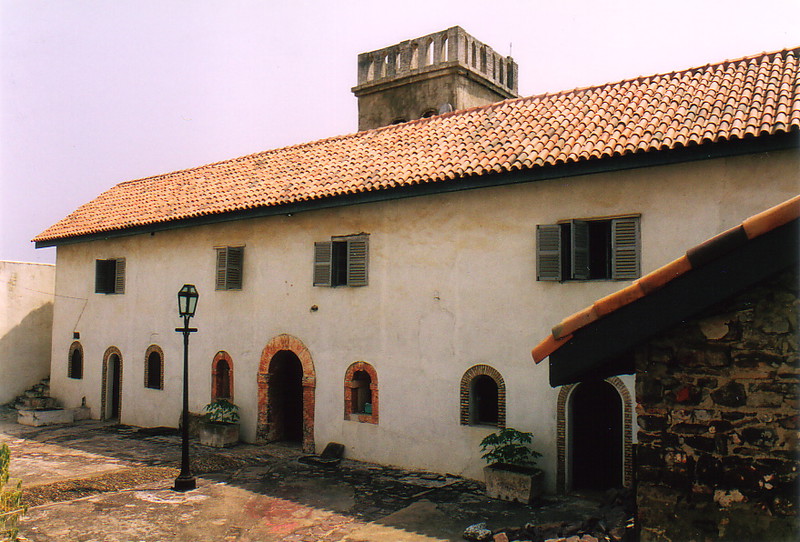
Under the British St George's Castle became a colonial police academy, and it remained an academy after Ghana's independence until it was finally declared a national monument in 1972. However, after the departure of the Dutch, Fort St Jago passed through a number of strange incarnations over the years. It started its new life as a guesthouse and then morphed into a leprosy hospital (until a permanent hospital could be built in town) and then a prison (again, until a prison could be built elsewhere) before returning to life as a guesthouse. In 1986 the government closed the guesthouse and started promoting the fort as a piece of Ghana's heritage, but surprisingly the guide on the fort door told me that plans are still afoot to convert it back into a guesthouse; it's just money that's the problem. Given that Fort St Jago is a World Heritage site it seems a little odd that it might end up being a guesthouse again, but for once I can see the logic. The fort would make a perfect place to stay.
For a start, the rooms are huge and airy, and given a reasonable amount of work they'd be wonderfully atmospheric. The old chapel would make a great suite and the officers' rooms would be perfect for a dormitory, while the tower would be the ideal spot for a candlelight dinner as the sun sinks into the shoreline. Meanwhile the courtyard would be a great spot for sitting and reading, sheltered from the hot afternoon sun by the shadow of the entrance hall and lit at night by the lovely Victorian-era streetlight in the middle of the yard.
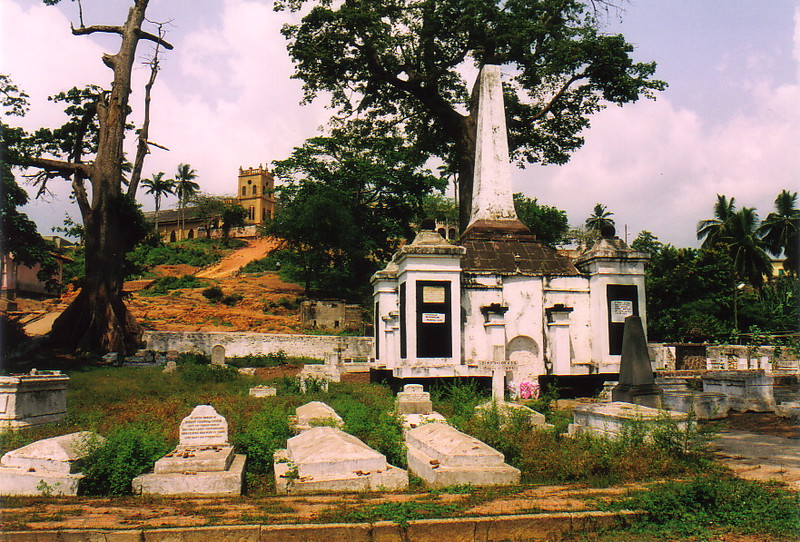
But it would be the stupendous views from the fort's rooms that would be the real selling point. From the southern walls the view of St George's Castle is beautiful and you can clearly see the grassy patch where the old town of Elmina used to be, before the British bombarded it in 1873, forcing the town to up sticks and move across to the other side of the lagoon; now it's a pleasant grassy park next to the castle and behind the bustling fish market. You can see the lagoon in its entirety, stretching west through the fishing harbour before emptying into the flat, criss-crossed expanse of Benya Lagoon; during its journey it forms the basis for both the town's main economies, fishing and salt-making. And all the while the palm-fringed Ghanaian coast stretches east and west, looking a lot cleaner and more beautiful from this distance than close up, when the flotsam and jetsam of modern African life is all too obvious.
The view north is less stunning, but it's more interesting because you get to watch the town bubble along beneath you. A red Catholic church dominates Elmina from a hill to the north, while bang in the middle of town is a striking Methodist church; finally a Presbyterian church to the northeast is a vivid reminder that Ghana is home to a staggering number of different brands of Christianity.
Around Elmina
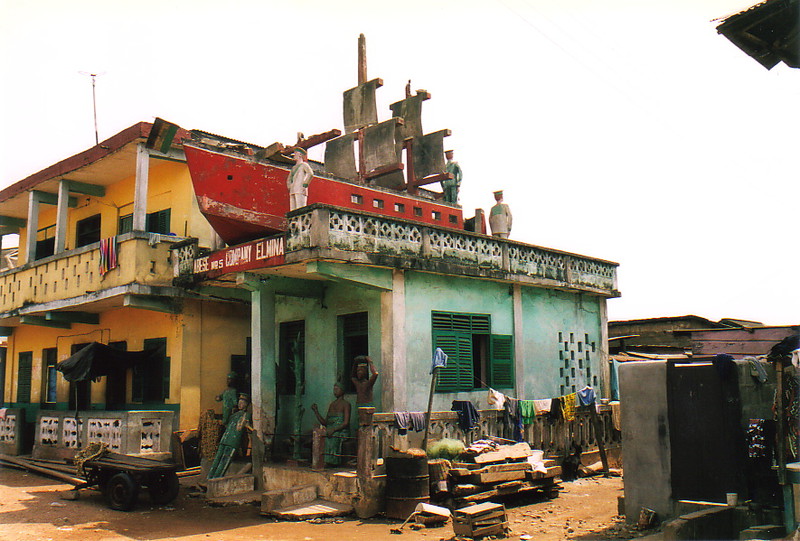
From the fort you can also spot one or two posubans, their concrete decorations cracking in the sun. Posubans are buildings that are peculiar to the Ghanaian coastal region, and peculiar is the right word; they might be utterly Ghanaian in concept, but disappointingly they look like they could be from anywhere in the world... anywhere with a bizarre taste for tacky decoration, that is.
Each posuban belongs to an Asafo company. The Asafo companies were originally Akan military groups who were devoted to the defence of the state (the Akan people make up about 44 per cent of Ghana's population and are based around Kumasi, with the Ashanti tribe being the most influential members of the Akan). The name Asafo comes from the local words sa (war) and fo (people), but although Asafo companies are no longer particularly military, they do exert political influence through their involvement in the selection and enstoolment of new chiefs (Ashanti chiefs don't sit on thrones, they sit on stools, hence they are 'enstooled'). The Asafo companies' civic duties include working on sanitation projects, road-building, policing, firefighting and community entertainment, so in a sense they're like a Rotary Club with clout; and each company also has its own posuban, which acts as a religious shrine and a gathering place for meetings and rituals, not unlike a clubhouse.
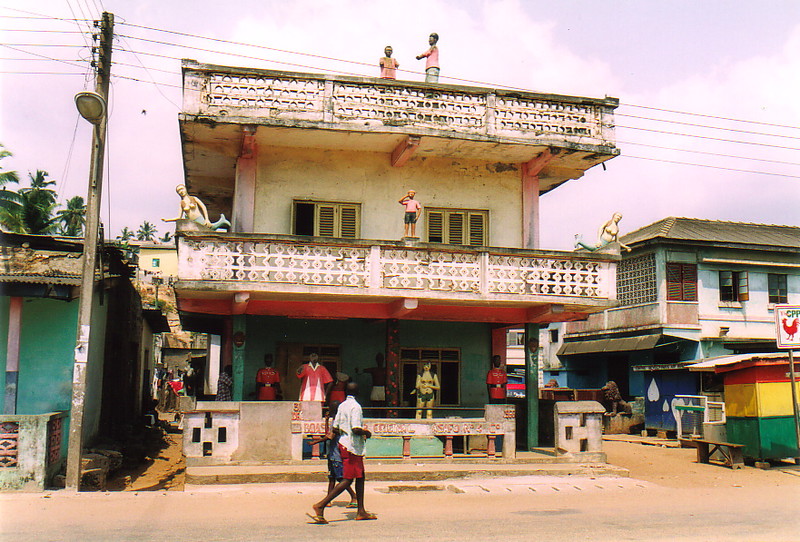
This is all well and good, but it doesn't explain why posubans are decorated with a thankfully unique type of concrete sculpture. In Elmina I saw posubans with concrete ships on their roofs, crumbling figures depicting Adam and Eve, and plenty of unintentional representations of concrete cancer in action. I suppose they looked quite fun, and each sculpture does have a story attached to it (which you can discover by talking to the Asafo members, if you are happy to pay for the privilege) but I get the feeling that the posubans in Elmina aren't the best on the coast, and I couldn't help feeling that they were just plain ugly.
So I explored Elmina by foot, wandering from the castle and the fort to the Dutch cemetery, which was originally built in 1806 on the shore of the bay before being moved to the current site at the foot of St Joseph's Hill. It was atmospheric, but by this stage I'd started to notice an increased amount of hassle from the locals. In no way was it anything like the battering you get in the Sahel, but instead of the relatively happy vibe of Cape Coast, every chirpy 'hello' I heard in Elmina quickly lapsed into a demand for pens, money, school books, my address or something equally unfortunate.
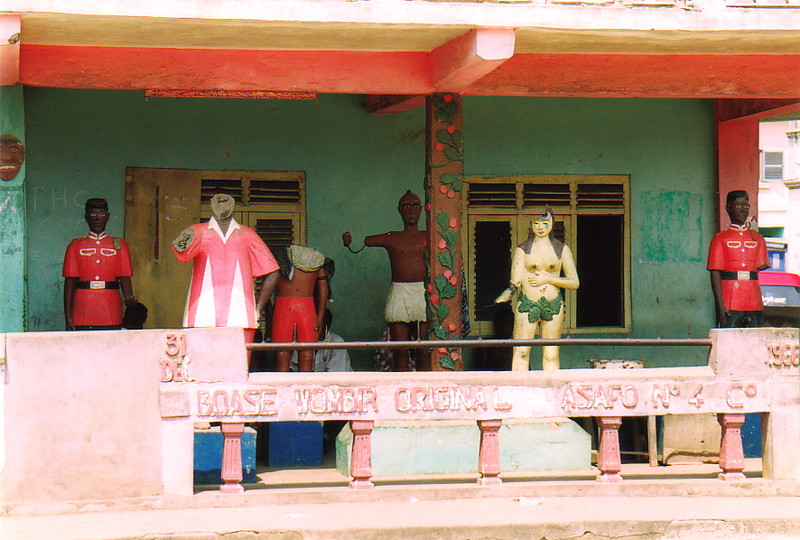
One tout asked me my name as I entered St George's Castle, and when I left the castle he'd written 'To Mark From Tony' on a seashell, which he wanted to give to me as a present. That was a pleasant surprise, except he then started hounding me for a present in return, preferably some money, and it soon became obvious that this was simply another way of selling me a shell with my name on it, which I really didn't want. I ended up handing it back to him, much to his dismay, but it summed up Elmina's hassle factor; compared to Mali it's practically invisible, but compared to Cape Coast it's as irritating as the posubans are tacky.
The upshot was that instead of spending the whole day exploring Elmina, I hopped into a shared taxi and headed back to Cape Coast, just in time to visit a spot for lunch (a spot being a Ghanaian drinking hole – it was the only place I could find that was serving food on a Sunday). A couple of minutes after sitting down I noticed that there was a distinct smell of petrol coming from the floor, and sure enough the ground was smeared with an oily sheen.
'Is this petrol down here?' I asked the guy in charge, straining to be heard over the thumping music that all spots are morally obliged to pump out.
'No, it's diesel,' he said. 'I put it down because it is very dusty here, and if dust lands on diesel it sticks. Clever, eh?'
Tactfully I didn't answer, but even though the oil fumes made my fried chicken taste somewhat mechanical, I was happy to be back in the Cape. Elmina's touts have a long way to go before they're up to Malian standards, but it would be awful if, in ten years' time, visitors just think of it as a pretty place that's spoiled by the hassle. It could happen, but I hope not; Elmina is a really special place.